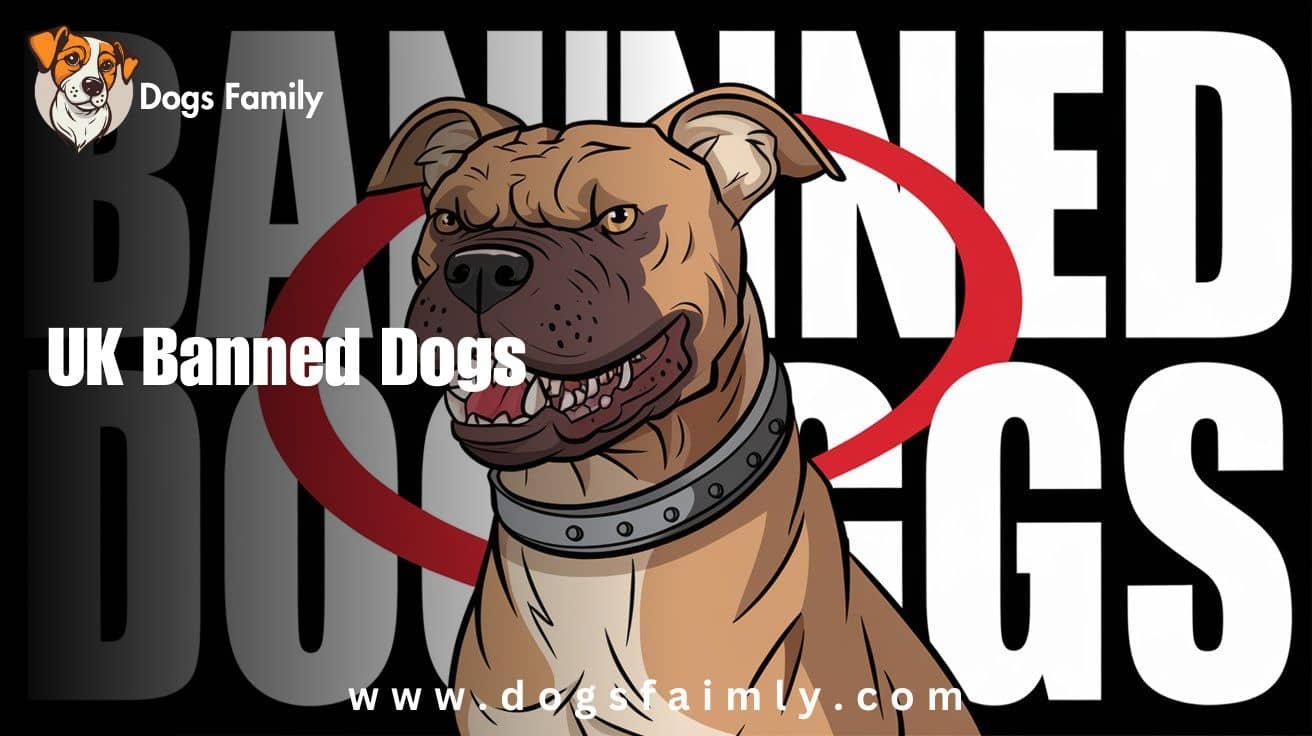UK Banned Dogs: Understanding the Restrictions and Their Impact
UK Banned Dogs breeds face bans under the Dangerous Dogs Act of 1991. This legislation aims to protect the public from aggressive dog behavior while promoting responsible dog ownership. Understanding which breeds are banned, the reasons behind these restrictions, and how they impact dog owners and enthusiasts is crucial for anyone interested in pet ownership in the UK.
Why Are Certain Breeds Banned?
The primary goal of banning specific dog breeds focuses on public safety. Some dogs have historically been associated with aggressive behavior, leading to serious injuries or fatalities. The Dangerous Dogs Act specifically targets breeds deemed particularly dangerous based on their physical attributes and reported incidents of aggression. However, it’s essential to recognize that various factors influence a dog’s behavior, including training, socialization, and the owner’s responsibility.
Anecdote: A Misunderstood Breed
I remember a friend of mine, Sarah, who owned an American Pit Bull Terrier named Rocky. While Rocky was one of the most affectionate dogs I had ever met, Sarah often faced judgment from others simply because of his breed. Despite his gentle nature and playful demeanor, she had to navigate the stigma surrounding his breed. This experience highlights the importance of understanding that not all dogs of a particular breed are dangerous; behavior often stems from upbringing and training.
List of Banned Breeds in the UK
UK Banned Dogs, As of now, the following breeds face bans under the Dangerous Dogs Act:
- Pit Bull Terrier
- Japanese Tosa
- Dogo Argentino
- Fila Brasileiro
These breeds are prohibited for ownership, breeding, or sale. It’s worth noting that if authorities suspect a dog is a banned breed, they can seize and assess the dog. Owners may face legal consequences if they possess a banned breed.
The Impact of the Ban
UK Banned Dogs The banning of certain breeds has sparked significant debate within the dog community. Here are some key impacts of the breed-specific legislation:
1. Public Perception
Many people still associate specific breeds with aggression, even if they’ve never had direct experience with them. This stereotype can lead to prejudice against responsible owners and their dogs, affecting their ability to socialize and participate in community events. Such misconceptions often foster fear and misunderstanding, which can lead to an unwelcoming environment for certain breeds.
2. Responsible Ownership
The ban has encouraged discussions about responsible dog ownership and training. Owners of breeds that are not banned often feel the need to demonstrate their dogs’ good behavior to combat negative stereotypes. Consequently, this emphasis on responsible ownership can lead to better training practices and increased awareness of dog behavior. Educating oneself about dog behavior and training techniques proves vital for all dog owners, regardless of breed.
3. Rescue Organizations and Rehoming
Rescue organizations often struggle to find homes for banned breeds. Even well-behaved dogs may be overlooked because potential adopters worry about the legal implications of owning a banned breed. This situation can lead to higher euthanasia rates for these dogs in shelters. In many cases, banned breeds are loving and loyal companions that simply require the right environment and owner.
4. Legal Challenges
Owners of banned breeds frequently face legal challenges. Some may attempt to keep their pets, leading to court battles and emotional stress. Additionally, differences in how the law is enforced across regions create confusion and fear among dog owners. This inconsistency can result in dogs being seized and put down, even if they have never displayed aggression.
Alternatives to Banned Breeds
If you’re considering getting a dog but are concerned about breed restrictions, many wonderful alternatives are not UK Banned Dogs. Here are a few breeds known for their friendly nature, making them great family pets:
- Labrador Retriever: Known for their friendly disposition and intelligence, Labs excel with families and children. They also adapt well to various lifestyles due to their trainability.
- Golden Retriever: Similar to Labs, Golden Retrievers boast a gentle nature and loyalty. They often serve as therapy dogs because of their calm demeanor.
- Cocker Spaniel: These dogs are affectionate and great with children, making them excellent companions. Their playful nature brightens any household.
- Beagle: Beagles are friendly, curious, and fantastic with families. Their sociable nature means they typically get along well with other pets.
Step-by-Step Guide to Choosing a Dog
If you’re interested in adopting a dog, here’s a simple guide to help you make the right choice:
Step 1: Research Breeds
Begin by looking into breeds that fit your lifestyle and family dynamics. Consider factors such as size, energy level, and temperament. Websites like the Dogs Family, Dogs Daily Hub, And Kennel Club provide comprehensive breed information.
Step 2: Visit Local Shelters
Next, check out local animal shelters and rescue organizations. Many dogs in shelters are looking for loving homes, and the staff can help match you with a dog that suits your needs.
Step 3: Meet the Dog
Spend time with potential pets to gauge their behavior and personality. Look for a dog that appears comfortable around you and your family. This approach can help you find a dog that meshes well with your household.
Step 4: Ask Questions
Don’t hesitate to ask shelter staff or breeders questions about the dog’s history, behavior, and any special needs. Understanding a dog’s background will help you make an informed decision.
Step 5: Consider Training
Once you adopt a dog, invest in training. Proper training is essential for building a strong bond and ensuring good behavior. Many local organizations offer obedience classes that can enhance your relationship with your new pet.
The Future of Dog Ownership in the UK
UK Banned Dogs The conversation around dog breeds and legislation is evolving. Advocates for change argue that breed-specific laws are ineffective and that a focus on responsible ownership and training presents a more effective solution for public safety. This shift in perspective may eventually lead to reforms in the legislation governing dog ownership in the UK.
Call to Action: Responsible Dog Ownership
UK Banned Dogs, If you’re considering adding a furry friend to your family, remember that responsible dog ownership is key. Choose a breed that fits your lifestyle, and invest in training and socialization. Support local shelters and organizations working to help banned breeds find loving homes. Together, we can create a community that celebrates all dogs, regardless of their breed.
Hyperlinks:
Why did the UK ban XL bullies?
The UK banned XL Bullies due to growing concerns about public safety and increasing reports of aggressive behavior. The decision, made in response to a series of incidents involving attacks, aimed to mitigate risks associated with these dogs. The government classified XL Bullies as dangerous, prompting the Dangerous Dogs Act to prohibit their ownership, breeding, and sale. Advocates for the ban argue that specific breeds can pose significant risks if not properly trained and socialized. However, critics contend that responsible ownership and proper training are crucial factors in preventing aggression, regardless of the breed.
Why is Belgian Malinois banned in the UK?
The Belgian Malinois is not banned in the UK under the Dangerous Dogs Act. However, it is often confused with other breeds that face restrictions due to their strong protective instincts and high energy levels. While the Belgian Malinois can be an excellent working dog and family pet when properly trained and socialized, some owners may struggle to manage their active nature. This can lead to behavioral issues, which is why potential owners are encouraged to research and prepare adequately for their needs. Responsible ownership and training are crucial for ensuring their positive integration into households.
Why did the UK ban pit bulls?
The UK banned Pit Bulls under the Dangerous Dogs Act of 1991 primarily due to public safety concerns. Pit Bulls were associated with several serious attacks, leading to a perception of them as inherently dangerous. The ban aimed to reduce the risk of dog-related incidents and protect the public, especially children. However, many advocates argue that a dog's behavior is influenced more by training and socialization than breed alone. They believe that responsible ownership and proper training could prevent aggressive behavior, highlighting the ongoing debate about breed-specific legislation in the UK.
Why are XL bullies so aggressive?
XL Bullies, or American Bully XL, can exhibit aggression due to several factors, primarily linked to their upbringing and environment. Poor training, lack of socialization, and abusive treatment can lead to aggressive behaviors in any breed. Additionally, their muscular build and high energy levels may make them more intimidating. However, it’s essential to remember that aggression is not inherent to the breed. Responsible ownership, including proper training, early socialization, and a stable environment, plays a crucial role in shaping a dog's behavior. When raised with love and discipline, XL Bullies can be affectionate and loyal companions.


Üsküdar su tesisat tamiri Petek temizliği yaptırdıktan sonra faturalarımız düştü ve ev çok daha iyi ısınmaya başladı. https://www.trngamers.co.uk/read-blog/9527